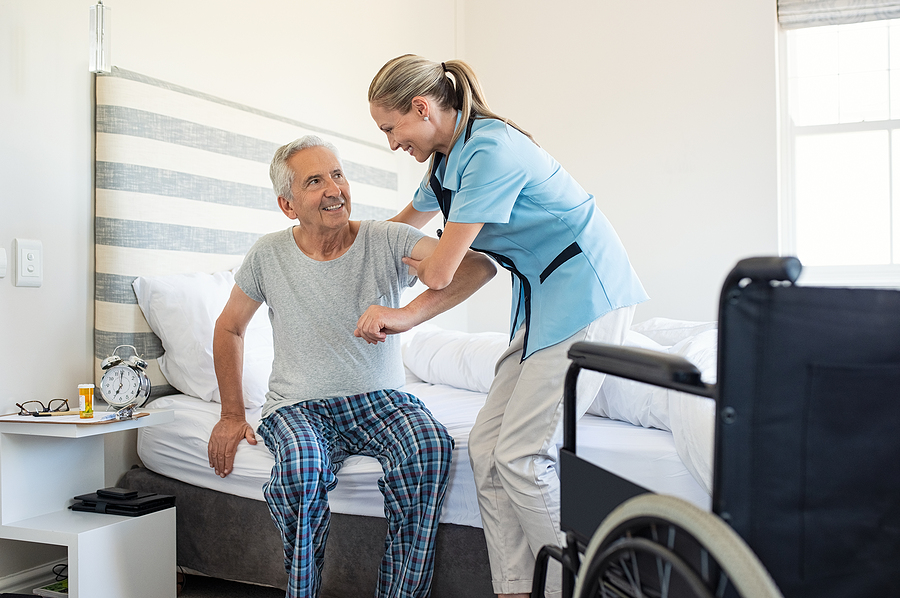When it comes to ensuring the safety and comfort of seniors, particularly those with limited mobility, modifying their living spaces is crucial. One of the most important areas to address is the bedroom, where seniors spend a significant amount of time resting and recuperating. For seniors facing physical challenges, particularly in Ottawa, emergency bedroom modifications can make a world of difference in terms of their independence, comfort, and overall well-being.

Creating a space that is safe, accessible, and conducive to better sleep and mobility should be the primary goal. Whether you’re caring for an elderly loved one or responsible for designing a living space for seniors with special needs, it’s important to consider the best ways to modify a bedroom to suit these requirements.
Key Modifications to Improve Mobility
Bed Adjustments
The bed is the central piece of furniture in any bedroom, and for seniors with limited mobility, it should be both comfortable and functional. Here are some adjustments to consider:
- Height Adjustments: The bed should be at a height that allows the senior to easily get in and out of it without strain. A bed that is too low or too high can be challenging for those with limited mobility. Look for adjustable beds that allow for easier positioning and elevation of both the head and foot of the bed.
- Use of Bed Rails: Bed rails can provide much-needed support when getting in and out of bed. They offer stability and prevent seniors from falling out of bed at night, ensuring better safety.
- Mattress Choice: A comfortable and supportive mattress is key to a good night’s sleep. Look for mattresses that provide the right balance of firmness and softness, particularly those that cater to seniors’ specific needs, such as pressure relief.
Easy Access to Lighting and Controls
Lighting plays a vital role in a senior’s bedroom. Poor lighting can lead to accidents, so making sure that the bedroom is well-lit and easy to navigate is crucial. Here’s how to adjust lighting for seniors with limited mobility:
- Motion-Sensor Lighting: Consider installing motion-sensor lights that turn on automatically when someone enters the room. This minimizes the need for seniors to stretch or get up to switch on a light.
- Accessible Light Switches and Dimmers: Move light switches and dimmers within reach of the bed. This prevents seniors from having to get up or reach too far to adjust lighting levels.
- Nightlights: Installing nightlights along the path to the bathroom or in strategic areas of the room can provide sufficient illumination without being too bright.
Accessible Storage Solutions
Seniors with limited mobility often face challenges when it comes to accessing storage. Whether it’s a closet, dresser, or shelf, the storage areas in a bedroom must be easily reachable. Here are some ideas for making storage more accessible:
- Lower Shelves and Drawers: Adjust shelves and drawers to a lower height so that seniors don’t have to stretch, bend, or climb to access their belongings.
- Easy-to-Open Drawers: Use drawers and cabinets with handles that are easy to grasp. You can install pull-out shelves or drawers with soft-close mechanisms to make it easier to access items without force.
- Organize with Bins: Use bins or baskets to organize small items more easily. These are simple to handle and can help seniors find what they need without struggling.
Non-Slip Flooring and Rugs
Slips and falls pose a serious risk to seniors, so the bedroom flooring must be safe and non-slippery. Consider these options:
- Non-Slip Area Rugs: If you have area rugs in the bedroom, ensure they are secured with non-slip pads to prevent tripping hazards.
- Hardwood or Laminate Floors: Consider replacing carpet with hardwood or laminate flooring, which is easier to maintain and provides a safer surface for mobility aids like walkers or canes.
- Anti-Slip Treatments: If replacing the floor isn’t an option, there are anti-slip treatments that can be applied to existing flooring to improve traction.
Space for Mobility Aids
Mobility aids such as walkers, canes, or wheelchairs should be considered when modifying a senior’s bedroom. The room must have enough space to accommodate these aids without causing obstructions or making the area feel cramped.
- Clear Pathways: Ensure there is enough space around the bed, closet, and furniture to allow easy movement of walkers or wheelchairs. A clear, unobstructed path from the bed to the bathroom is essential.
- Furniture Placement: Arrange furniture in such a way that it doesn’t block important areas or create obstacles. Consider placing furniture against the walls to free up more space in the center of the room.
Bathroom Accessibility
Although not technically part of the bedroom, the bathroom is a key area that often needs to be modified for seniors. Make sure that seniors can safely navigate to and from the bathroom with ease. Modifications may include:
- Grab Bars: Install grab bars near the bed, along the hallway, and inside the bathroom to provide support when walking or transitioning between spaces.
- Wheelchair-Accessible Shower: A low-threshold or wheelchair-accessible shower can make it easier for seniors to bathe without the risk of falling.
Enhancing Comfort and Quality of Life
Along with improving mobility and safety, it’s important to create a comfortable environment for seniors. Enhancing their quality of life should be a priority in any modification process:
- Temperature Control: Ensure the bedroom is well-ventilated and maintains an optimal temperature. Seniors can be more sensitive to temperature changes, so having an easily adjustable thermostat or portable fan is a good solution.
- Comfortable Bedding: Soft, breathable bedding can help seniors get a more restful sleep. Consider using hypoallergenic materials to avoid irritants and make sure the bedding is easy to change.
- Personalized Decor: Make the bedroom feel like a personal sanctuary by including decor that is meaningful to the senior, such as family photos, favorite artwork, or items that hold sentimental value.
Technology for Convenience
Several technological tools and devices can be incorporated into a senior’s bedroom to further enhance their safety and comfort:
- Smart Home Devices: Use smart home devices like voice-activated lights, smart thermostats, or remote-controlled curtains to make life easier for seniors who may have difficulty reaching or adjusting switches manually.
- Emergency Alert Systems: Install emergency alert systems within easy reach of the bed, so the senior can quickly call for help if needed. This is especially useful if the senior is living alone.
Why Choose Adaptive Living?
At Adaptive Living, we understand that every senior has unique needs and preferences when it comes to their living environment. Our focus is on creating tailored solutions that prioritize both comfort and safety. Whether you’re making simple modifications or extensive renovations, we work closely with you to ensure the best outcomes. Our experienced team is dedicated to making life easier for seniors, and we are committed to helping you transform bedrooms into functional, safe, and comfortable spaces. Reach out to Adaptive Living today to begin making essential modifications for seniors with limited mobility.



